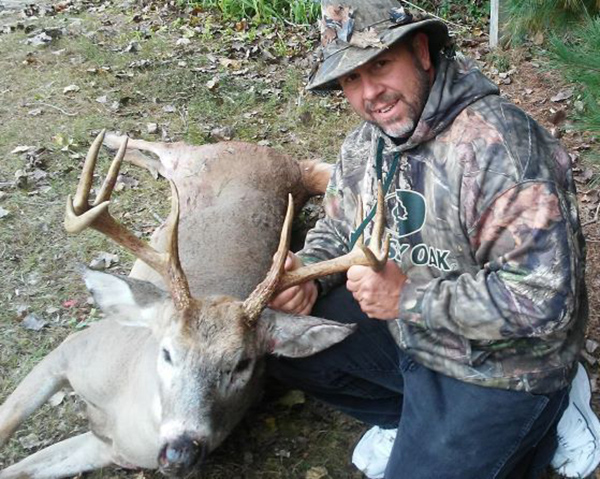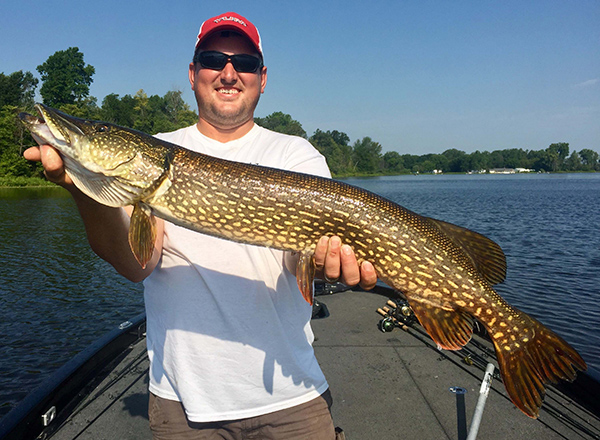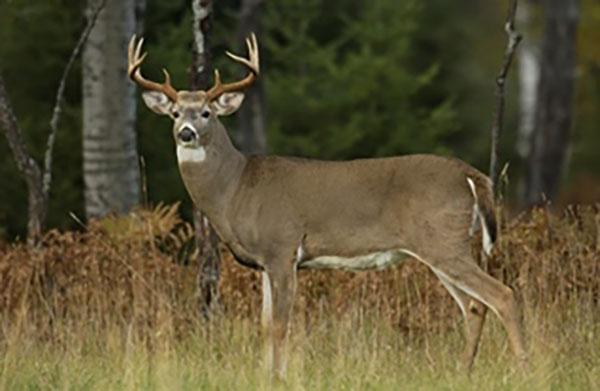- Details
By Louie Stout
 Scouting Rewards Ignowski with Big Buck
Scouting Rewards Ignowski with Big Buck
Dennis Ignowski saw the big buck from afar while scouting deer locations on public land in September. “He was headed right for one of my tree stands the day I was scouting,” said the Niles hunter. I made a mental note of that and waited until conditions were right during bow season.”
On Oct. 11, the first major cold front swept over Michiana. Ignowski checked the wind direction that evening and ventured into the woods.
Wind direction is key to deer hunters. They don’t want the wind blowing from behind their tree stands and wafting human scent in the direction of their shooting lanes.
The wind lined up perfectly.
“It was a pinch point off a swamp edge and I know the deer like to bed there,” he described. “The wind was right and I thought it was a good evening to see if he was around.
Ignowski climbed into the tree stand and waited for a while. Suddenly, his eyes caught some movement around 6:30 that evening.
It was that big buck.
“He was about 40 yards out and turned and was headed toward the swamp,” he said. “I figured it was shoot now or never. I took the shot and the arrow found its mark.”
The wounded buck bolted right by Ignowski before dropping dead 40 yards away.
“I started shaking and making cell phone calls to my wife, my dad and my friend (Tex Holmes),” said Ignowski. “Tex gave up his night and came out to help me get the deer out of the woods.”
The buck was a dandy 10-pointer that dressed out at 225 pounds.
“I’ve shot 55 deer over my lifetime, but this was the biggest overall and probably has the widest rack,” said Ignowski, whose family enjoys venison throughout the year. “It’s definitely going on the wall.”
- Details
By Louie Stout
 Coho Creating Good Early Run on St. Joseph River
Coho Creating Good Early Run on St. Joseph River
For years we’ve talked about Skamania steelhead running into the St. Joseph River this time of year.
This year is no exception. The fall run is underway and anglers are catching quite a few fish from the Twin Branch Dam down to the mouth of Lake Michigan.
And while your neighbor may have been telling you about catching some nice “steelhead” from the river the past week or so, it’s likely that many of those fish he’s catching actually are coho.
The confusion is understandable. It wasn’t until the past couple of years that the fall fishery in South Bend was limited to steelhead.
But that’s definitely changed with solid stocking efforts of coho the past three years and a change in stocking schedules that are sending bigger and more numbers of coho into Hoosier waters this fall.
- Details
By Louie Stout
 Phil Duracz of Chesterton with a monster 41-inch, 19-pound northern pike
Phil Duracz of Chesterton with a monster 41-inch, 19-pound northern pike
Fishing can be so unpredictable, regardless of your skill level.
In fact, the saying “beginner’s luck” may have been created by an angler.
But that’s Ok. That’s what makes fishing so darn cool. You’re not trying to hit a 95 mph fastball, shoot a basketball over a 7 footer, or run a football past 300-pound men.
You’re simply trying to tempt a fish with the brain the size of a pea to bite your hook and you never know when or what might happen.
- Details
By Louie Stout
 Deer Prospects Similar for Bow Opener
Deer Prospects Similar for Bow Opener
Deer hunters on both sides of the state line can expect to see deer numbers similar to last year when the archery season opens Oct. 1.
Biologists from Indiana and Michigan said fawn production was good last spring, there have been no indication of disease issues in the area and the mast and apple production has been good.
“We are going in with good numbers,” said Ken Kesson, wildlife biologist at Crane Pond Game Area in Jones, Mich. “It’s been a fairly normal summer and as of right now, we don’t have any concerns in southwest Michigan.”
The disease issue is important in Michiana given the history of Epizootic Hemorrhagic Disease (EHD) virus that struck the herd a few years ago and caused a lot of mortality. In addition, the Chronic Wasting Disease (CWD) that has appeared in central Michigan has not found its way into Michiana counties.
In Indiana, state deer biologist Joe Caudill said all indicators point to a positive fall season.


